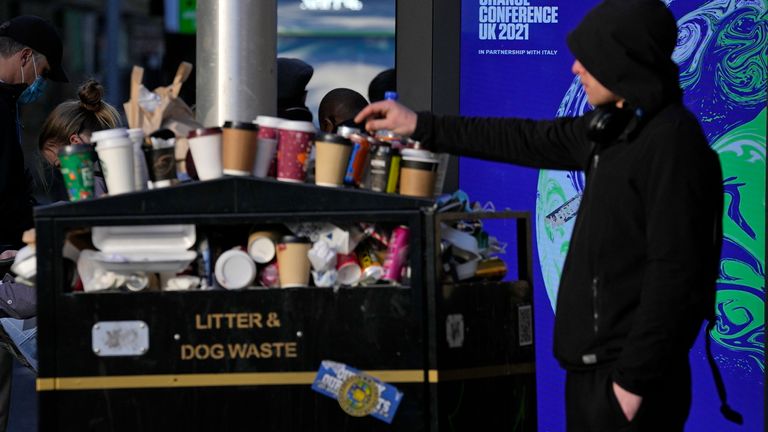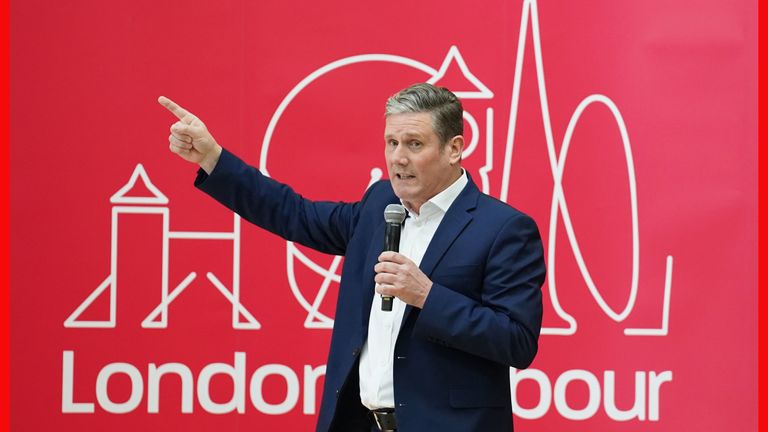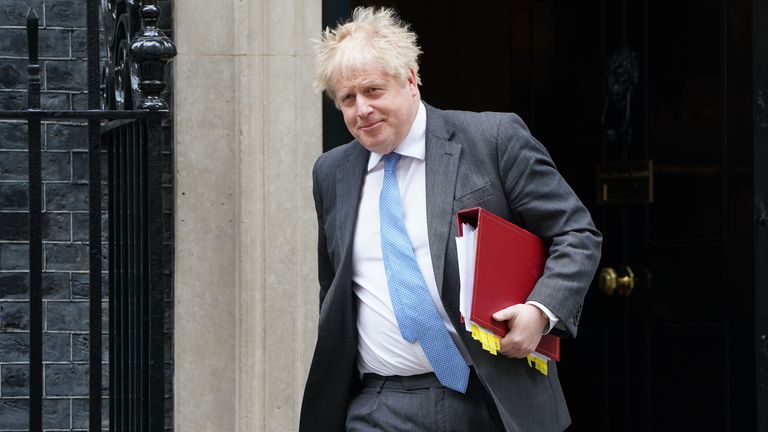[ad_1]
Many voters in England, Wales and Scotland will head to the polls on 5 May to elect their new local representatives.
More than 4,350 seats will be contested in England on over 140 councils, with all of Scotland’s 32 councils and all 22 councils in Wales also holding elections.
While these elections will directly decide who is responsible in an individual’s area for planning issues, housing and rubbish collections – they will also allow voters to have their say on national issues including the cost of living crisis, the ongoing row over parties held in Downing Street and across Whitehall and the government’s response to the war in Ukraine.
With a vast number of seats being contested, the results are likely to paint a vivid picture of the national mood for the first time since the 2019 snap general election.
But how do they work, what are the key areas to look out for and what will be constituted as a good or bad result for the main parties?
How can I vote?
To vote in the upcoming local elections, you need to have registered to do so and be aged over 18 in England, or over 16 in Scotland and Wales.
EU or Commonwealth citizens who live in the UK can vote in England, while any foreign citizen lawfully living in Scotland and Wales has the chance to take part in the polls.
Polling stations will be open between 07:00 and 22:00 on 5 May – but as long as you are in the queue at 22:00 you are within your right to cast your vote.
Voting usually takes places in local schools, churches and leisure centres and you will be given a ballot paper on your arrival.
In some circumstances, for example if you have COVID, you can apply for an emergency proxy vote – where someone votes on your behalf – until 17:00 on polling day.
What am I voting for?
Local councillors are elected for four-year terms by the local community to represent its views.
They are responsible for a wide range of issues from transport, rubbish collection, planning applications, and managing mental health services.
Taking part in the polls allows residents a say over what is happening in their locality.
Local residents can cast votes for as many council seats as there are being contested in their ward – which will be made clear at the top of the ballot paper.
What are the key results to look out for?
London, which accounts for more than four in 10 of all the English seats in play, could witness some upsets for either of the two main parties.
Wandsworth and Westminster – both currently controlled by the Conservatives – are two London councils which are particularly in the spotlight.
Labour won more votes but fewer seats in the local Wandsworth elections last time around – but hold all the constituency MPs – and will be wanting a different outcome next month.
An early adopter of Thatcherite policies including council house sales and privatisation, the Conservatives will be keen to hold on to the prized south London council.
Westminster has never been under the control of another party, but some commentators believe the Conservatives could come under pressure here as the partygate row rages.
Other southern councils where the Conservatives are also expected to face a challenge include Westminster, Barnet, Harlow, Southampton and Thurrock.
Meanwhile in Croydon, currently Labour-held authority dogged by financial woes as of late, could see Labour face a battle amid rising voter dissatisfaction.
Hartlepool, which the Conservatives gained in a by-election in 2021 – winning more than half of all votes from Labour for the first time since its creation in 1971 – will likely be in Labour’s sights.
Labour lost control of the authority in 2019 and It is currently run by a coalition of Conservatives and Hartlepool Independent Union councillors.
Peterborough was won by Labour in a by-election in 2019, only for the party to lose it to the Conservatives in the general election months later.
The result there could therefore be seen as a good indicator of public opinion on the current government.
In Wales, with the majority of councils are currently run by coalitions, it will be interesting to see if this changes and if Labour can hold Cardiff while the Conservatives can maintain a strong standing in the north-east of the country.
Meanwhile, in Scotland, all eyes will be on whether the Conservatives can at least maintain or even improve on the gains they made from Labour in 2017.
When will we know the results?
The results are expected in the early hours and throughout the day on Friday, with some councils also likely to declare on Saturday.
In England, around half of the councils are expected to begin their vote counts overnight on Thursday, with the remaining councils starting on Friday morning.
Meanwhile, in Scotland and Wales, the counts will not begin until Friday, with the earliest results not expected until that afternoon.
A fuller picture should be more clear from Friday evening.
What will the main parties consider as a good or bad result?
Leading pollsters Colin Rallings and Michael Thrasher have given their interpretation of how we should view the possible outcomes of the polls.
They suggest that more then 350 losses would be the figure that the Conservative Party won’t want to reach.
This could lead to many Conservative MPs – in both former Red-Wall marginal seats and seats across the south – to be particularly worried.
The party will attempt to write off losses of between 100 to 150 as “mid-term blues”, the pollsters suggest, but this level of decline will still indicate that the Tories trail Labour in terms of popular support.
Meanwhile, gains of over 100 would show the Conservatives are continuing to make inroads in former-Labour heartlands and would be seen as a great success for Mr Johnson’s government.
Labour, on the other hand, will be wanting to capitalise on their growing popularity, according to recent polls.
Mr Rallings and Mr Thrasher suggest that 200 or more gains – which would be the party’s best local election performance for a decade, would be seen as a triumph for Sir Keir Starmer.
Gains of between 50 and 100 would also be seen as a positive step forward, illustrating the party has made progress since 2018 and possibly even targeted some key council seats in London.
However, minimal or no gains would be seen as disappointing given Mr Johnson’s current declining popularity ratings.
Over 100 losses would be portrayed as a particularly poor result, shadowing the woes of 2021.
What happens now?
As Boris Johnson faces increasing pressure over the partygate scandal, the local elections will be seen as an indication of what voters have made of the matter.
If the Conservatives perform poorly in these elections, his premiership could be under even more strain – with a potential leadership challenge nearing closer to being triggered.
Tory MPs will likely be concerned that, if repeated at the next general election, similar results could see Labour leader Sir Keir Starmer become prime minister.
At the end of November, reports were swirling that letters of no confidence were being sent to the influential 1922 Committee of Tory backbenchers as the partygate issue reared its head.
The Conservative Party’s rules state that at least 15% of Tory MPs must write a no-confidence letter to make a leadership challenge possible.
There are currently 359 Conservative MPs, meaning 54 letters are needed to trigger a contest.
Before the elections, more than a dozen Tory MPs were calling for Mr Johnson to go.
This number could now increase. But as the letters are handed in confidentially, no accurate total of how many have been submitted to 1922 Committee Chairman Sir Graham is available.
But Mr Johnson has been adamant that he will still be PM in six months despite the rumblings of backbench discontent over partygate.
On the other hand, if Labour perform badly – at a time when the Conservative’s popularity ratings have been plummeting – Sir Keir’s leadership is also likely to be questioned.
This will particularly be the case if the Labour Party fail to retrieve ground in any of the former Red-Wall areas where the Conservatives made general election gains in 2019.
[ad_2]




